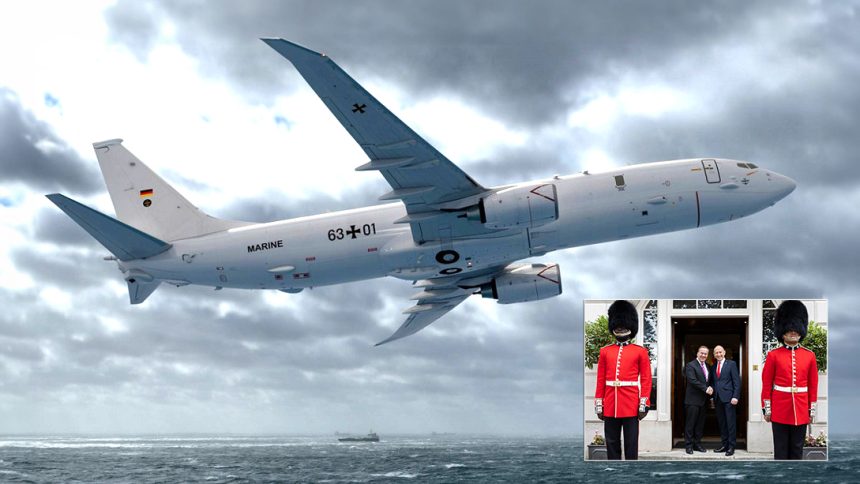UK Defence Secretary John Healey and German Defence Minister Boris Pistorious signed a wide-reaching defence agreement at Trinity House, London, marking increased cooperation on military research and German aircraft operating from UK bases.
The Trinity House Agreement is the first such pact to follow a UK-Germany treaty signed by Prime Minister Sir Keir Starmer and Chancellor Olaf Scholz on Aug. 27, 2024. The two nations have agreed to combine efforts to develop new long-range strike capabilities, new unmanned systems, and new joint training opportunities.
Speaking at the signing event in London on Oct. 23, 2024, UK Secretary of State for Defence said: “The Trinity House Agreement is a milestone moment in our relationship with Germany and a major strengthening of Europe’s security. It secures unprecedented levels of new cooperation with the German Armed Forces and industry, bringing benefits to our shared security and prosperity, protecting our shared values and boosting our defence industrial bases.”
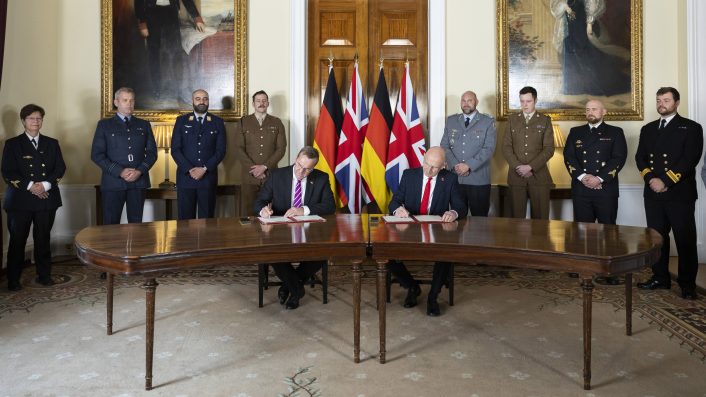
His German counterpart, Federal Minister of Defence Boris Pistorious further added: “The UK and Germany are moving closer together. With projects across the air, land, sea, and cyber domains, we will jointly increase our defence capabilities, thereby strengthening the European pillar within NATO. We can only strengthen our ability to act together. This is why our cooperation projects are open to other partners. We must not take security in Europe for granted. Russia is waging war against Ukraine, it is increasing its weapons production immensely and has repeatedly launched hybrid attacks on our partners in Eastern Europe.”
The agreement is broad in scope and spans many different aspects of defence policy, so to talk about the key points we will break it down into segments.
Maritime Patrol
Increased cooperation between the British and German armed forces will see German P-8 Poseidon maritime patrol aircraft, due for delivery in 2025, routinely forward deploy to RAF Lossiemouth. As the home of the RAF P-8 Poseidon MRA1 force and a hub for NATO maritime patrol aircraft, this will strengthen the alliance’s anti-submarine and naval patrol capabilities on its important northern flank.
The UK’s upcoming Sting Ray Mod 2 torpedo will seemingly be integrated on and possibly purchased for German P-8s, meaning weapon stocks can be shared between the two nations. At present, RAF Poseidons use the American Mark 54 torpedo. This torpedo was chosen in order to get the aircraft ready for operational duties as quickly as possible, without having to wait for the integration of the current model Sting Ray Mod 1.
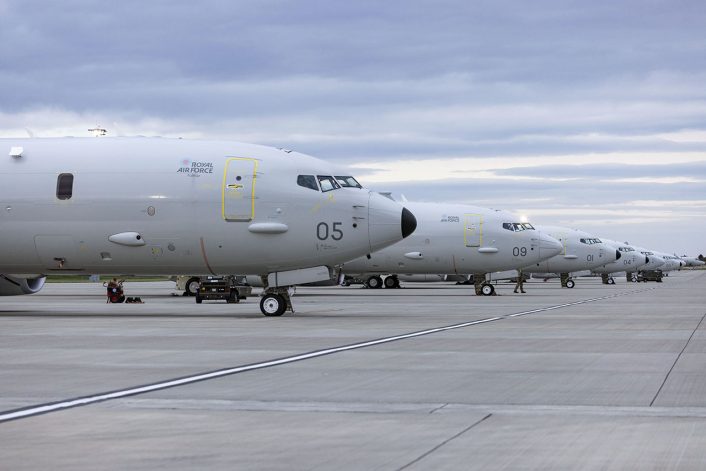
While some commentary online has presented news of future German deployments to the UK as somehow a demonstration of the UK’s inability to provide its own maritime patrol, it is important to note that there is a long history of cooperation between NATO forces in this role.
The UK is, both today and historically, a focal point for NATO maritime patrol and anti-submarine warfare operations, with U.S. Navy P-8 Poseidons being regular visitors to RAF Lossiemouth and Glasgow Prestwick Airport. It is the host nation for Exercise Joint Warrior, which often includes extensive naval and anti-submarine warfare drills.
Undersea surveillance operations to protect Critical Undersea Infrastructure will also be subject to increased cooperation. The UK and Germany are directly linked by the Atlantic Crossing 1 undersea cable, and indirectly linked by many others. In the last week, Germany has publicly proposed alongside Norway new Critical Undersea Infrastructure hubs to better protect the vital cables and pipelines that run across the seabed from malign interference by state or even non-state actors. Meanwhile, the UK has recently invested in RFA Proteus, a offshore support vessel that has undergone conversion to become a Multi-Role Ocean Surveillance ship with a particular specialty in monitoring and (potentially) repairing undersea infrastructure. New capabilities in this area will be developed jointly by the UK and Germany, possibly involving the use of emerging technologies like artificial intelligence.
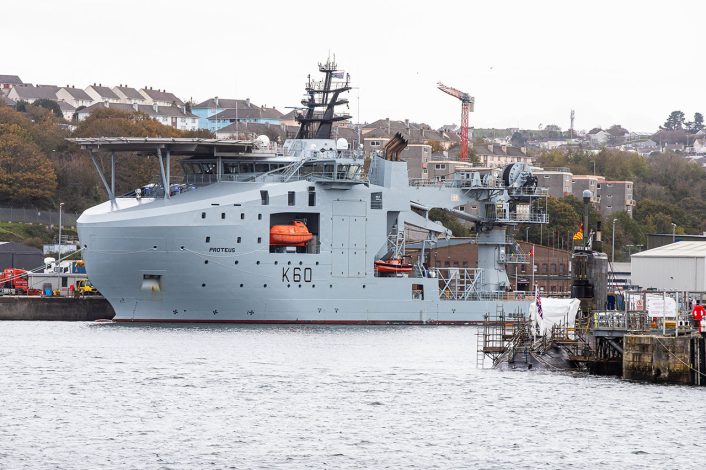
Russian activity near various undersea cables, for which the UK is a particular hub, with secretive intelligence vessels has led to this area of defence becoming particularly prominent in recent years, and the Nord Stream pipeline explosion in 2022 further catapulted the issue into the headlines across the world.
Deep Precision Strike
Joint efforts will be initiated between the UK and Germany to rapidly develop new capabilities allowing for longer range and more precise deep strike operations, strengthening both nations’ and NATO’s conventional deterrence. The exact nature of the intended new capabilities has not yet been confirmed, though any future development of this kind would likely focus on multi-purpose weapons able to be launched by ships, aircraft, submarines and land vehicles.
Currently the UK operates the Storm Shadow cruise missile from its Eurofighter Typhoon aircraft and BGM-109 Tomahawks from its submarine fleet. Comparatively, Germany fields the Taurus KEPD-350 from its Tornados and Eurofighters (Germany does not use the Typhoon designation), but the German Navy does not currently possess a dedicated land attack missile. Both nations operate multiple launch rocket systems in the form of M270. While compatible with the tactical ballistic missile ATACMS, neither nation has this weapon or anything comparable in their arsenals.
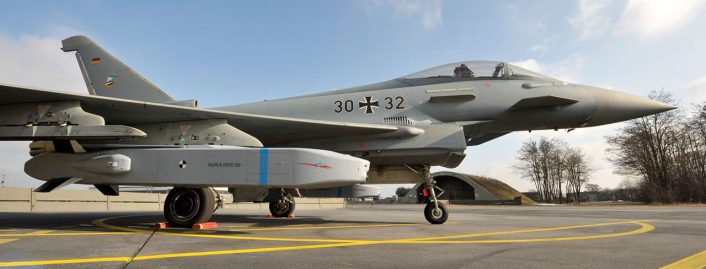
The UK has long intended to replace Storm Shadow with the Future Cruise/Anti-Ship Weapon (FC/ASW) that has been in development with France since the early 2010s. The missile would also theoretically equip Royal Navy frigates in a land attack role. Current estimates have placed the weapon’s in service date in the early 2030s. This was itself a product of the Lancaster House Treaties between the UK and France. The British Army has meanwhile expressed interest in the PrSM ballistic missile under development to replace the ATACMS in U.S. service.
Germany is not presently involved with either of these programs. For European MLRS operators, MBDA has proposed the Joint Fires Support Missile, though this appears to be in very early stages of development (especially compared to PrSM, the first of which have already been delivered). No replacement though appears to be in the works for the Taurus missile, despite being of a similar age to Storm Shadow.
There could be room for Germany to join the FC/ASW program, though at this stage of development its ability to inform the design process with its national requirements could be limited. Another option could be to join the UK’s home-grown efforts to develop a hypersonic strike missile.
Of course, another option could be a wholly new program, coinciding with the news of the UK and Sweden joining the European Long Range Strike Approach (ELSA) initiative unveiled in June 2024 by Germany, France, Poland and Italy.
This part of the agreement additionally includes a section on missile defence, noting both countries’ involvement in the European Sky Shield Initiative.
Unmanned Platforms and Land Vehicles
A key emerging technology for modern armed forces across the world is the ability to field advanced unmanned systems in the air, sea and on land. The UK and Germany have agreed to jointly research and develop unmanned aerial vehicles that can operate with future manned fighter platforms such as GCAP and FCAS. These will likely be in the form of ‘loyal wingman’ type drones that can extend the situational awareness and weapons capability range of manned platforms without placing human life at risk.
The two nations will also develop new Maritime Uncrewed Air System platforms to benefit naval operations. This could range from large carrier based fixed wing aircraft to operate from UK aircraft carriers to small short or vertical take off and landing systems that could be used for reconnaissance, logistics or even weapons deployment.
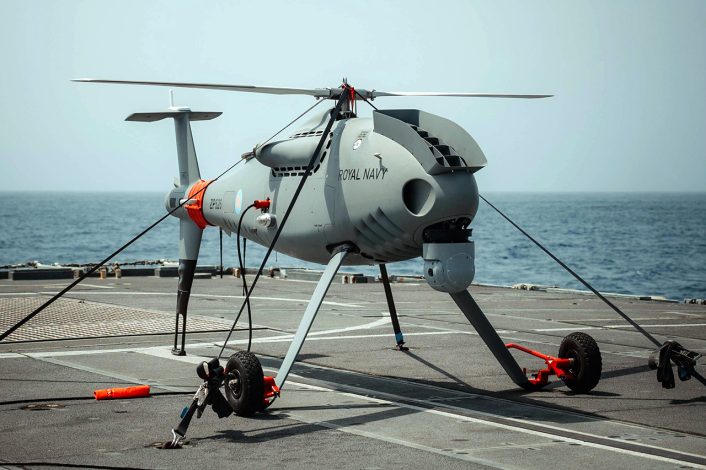
Land based unmanned vehicle development is also mentioned. The UK has quietly been developing capabilities in this area for a number of years, and Germany’s Rheinmetall, through its Canadian subdivision, has successfully sold its Mission Master UGV system to a number of nations’ armed forces already.
Rheinmetall’s experience in the land warfare field is renowned, and the company is already actively involved with UK interests through Rheinmetall BAE Systems Limited, who are producing the Challenger 3 main battle tank for the British Army. As part of the Trinity House Agreement the company will now also construct a UK facility to produce large calibre gun barrels, such as those used by the RCH 155 self propelled artillery vehicle. This will provide around 400 jobs and return this fabrication capability to UK shores for the first time in over a decade.
Both countries will also continue investment in the Boxer armored vehicle program, with the possibility for development of new capabilities and variants firmly within the intended pipeline.
Ukraine and NATO’s Eastern Flank
The UK will provide assistance to integrate modern missile systems onto British-made German Westland Sea King helicopters that are destined for use by Ukrainian forces following their recent retirement from German service. Which type of missile systems this might include is not specified, though a possible contender is the Brimstone missile that has been a key capability delivered by the UK to Ukraine. Such missiles could, in theory, with modification work, be mounted in a similar fashion to how the helicopters would have previously fielded torpedoes.
Just finished my latest piece → Germany and the UK will ensure that the six German-pledged Sea King helicopters can be equipped with modern missiles for their use in #Ukraine. This is one of the results of the Trinity House Agreement signed today.https://t.co/odDkVot2jg
— German Aid to Ukraine (@deaidua) October 23, 2024
Germany will support the joint UK-Latvian Drone Capability Coalition, which is intended to rapidly provide Ukraine with vast amounts of first-person view (FPV) drones, while the German-Polish Armor Capability Coalition will receive UK assistance in its goal to develop and provide armored vehicles to Ukraine.
UK and German forces will enhance interoperability with new joint training and operational deployments reinforcing NATO’s Eastern border in the Baltic states, where both nations have maintained forward deployed ground units for a number of years.

